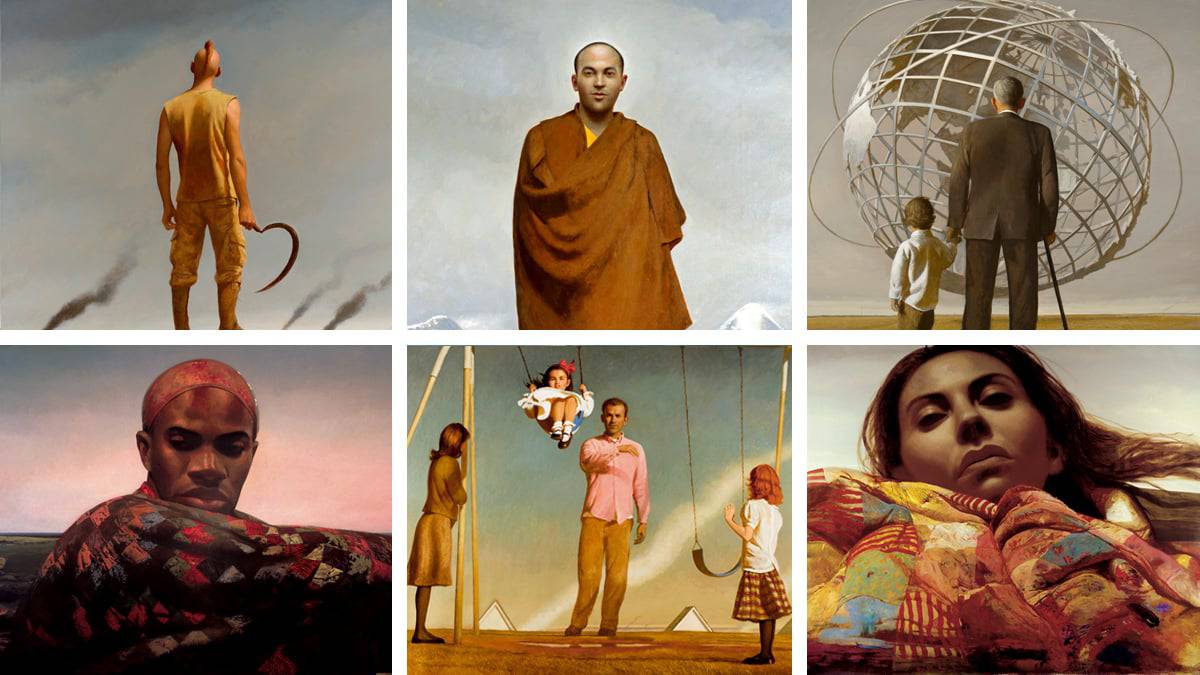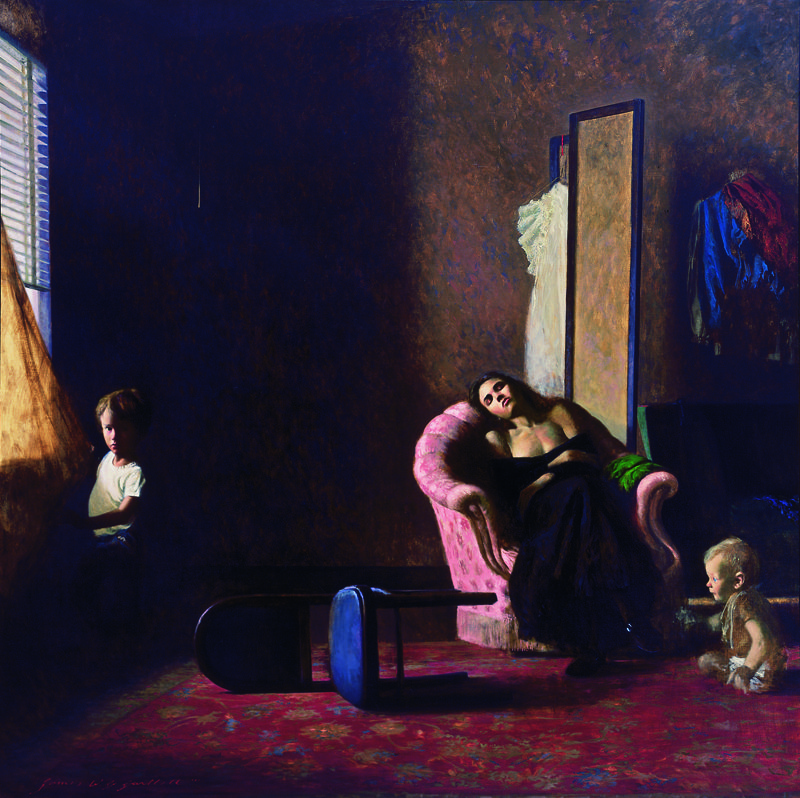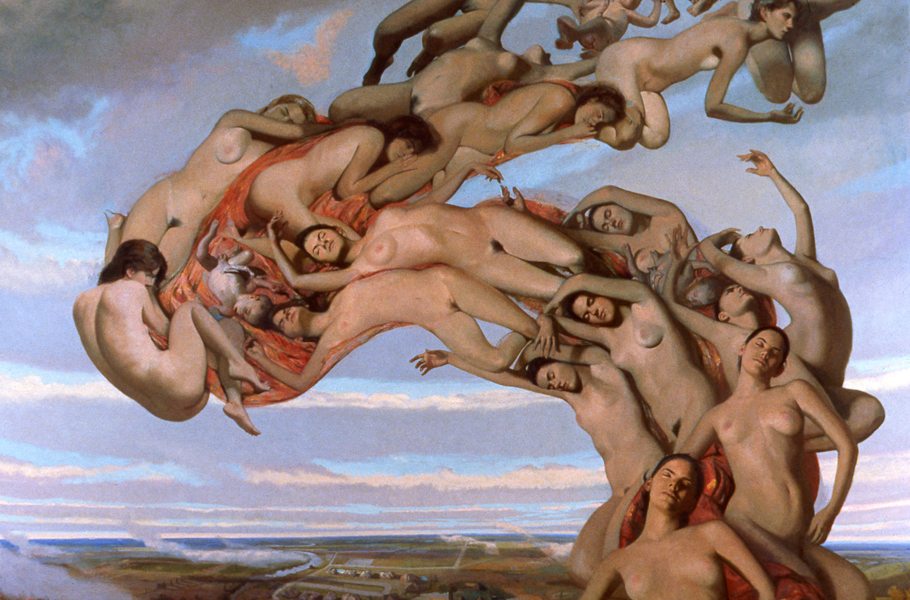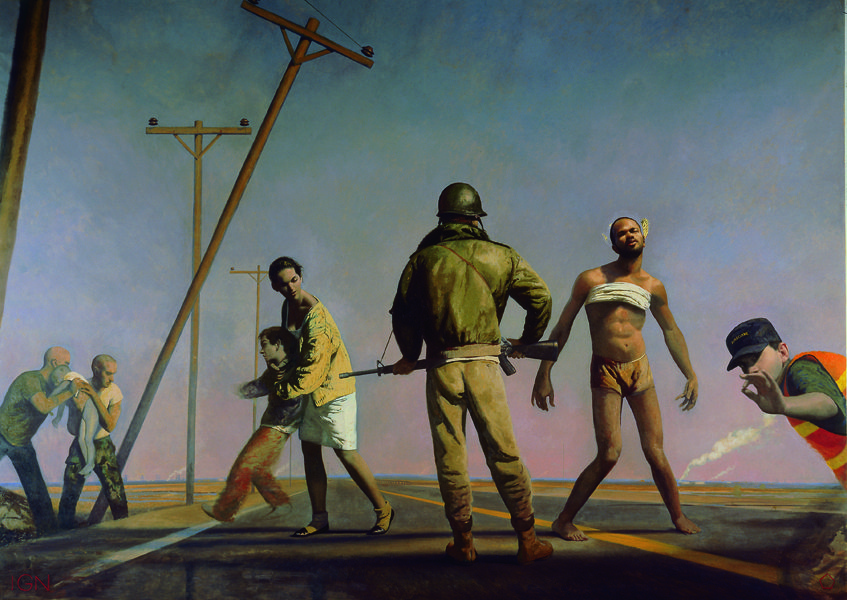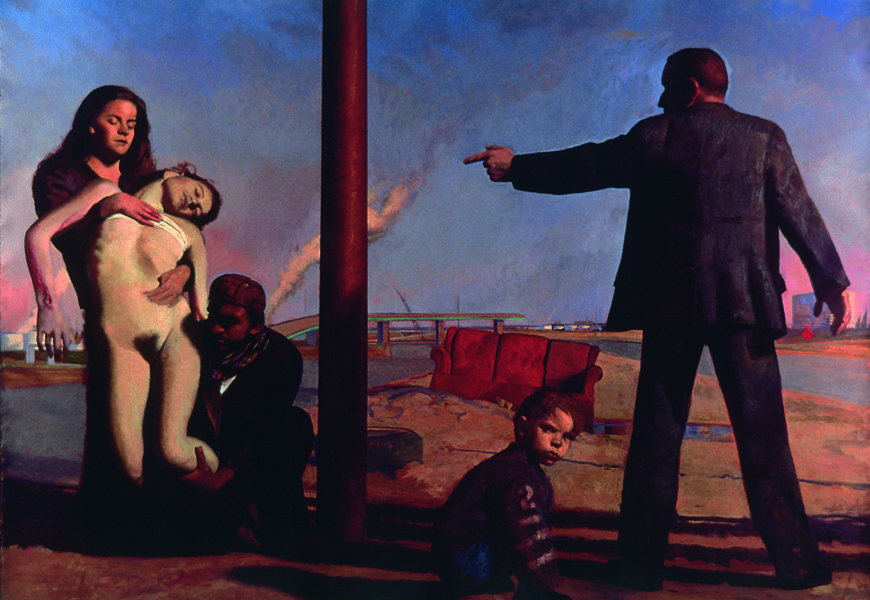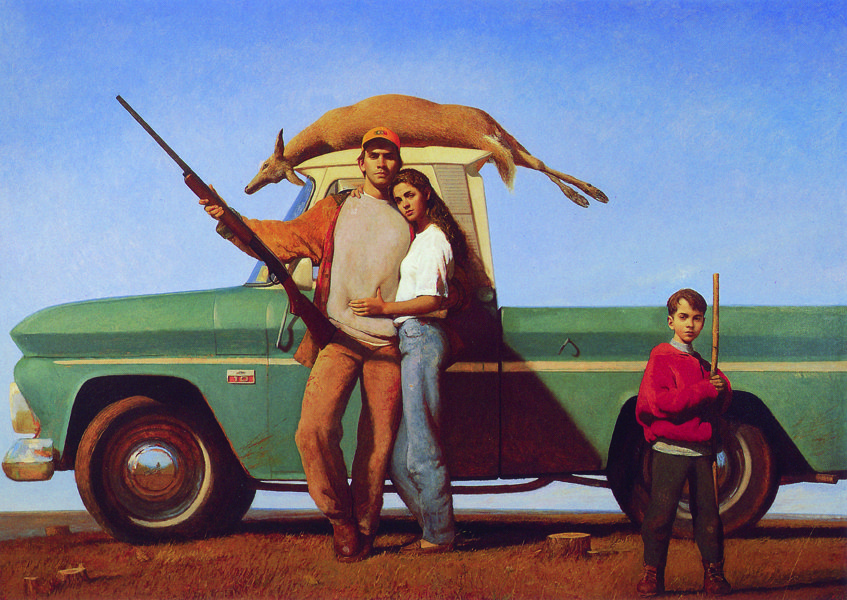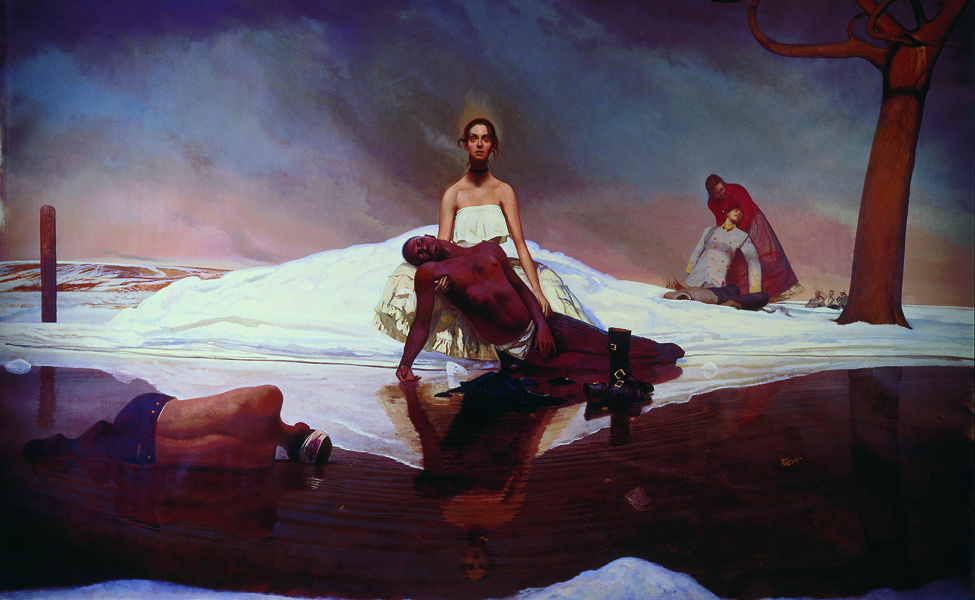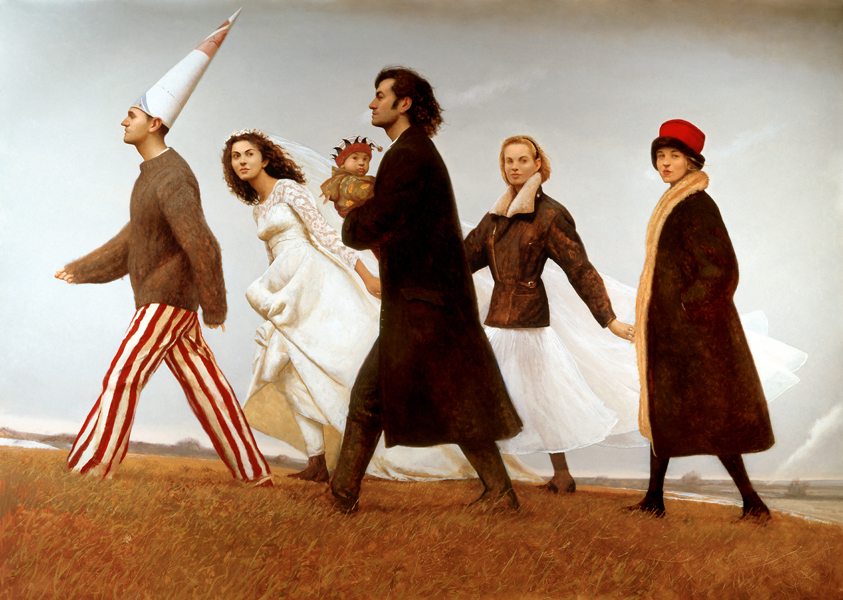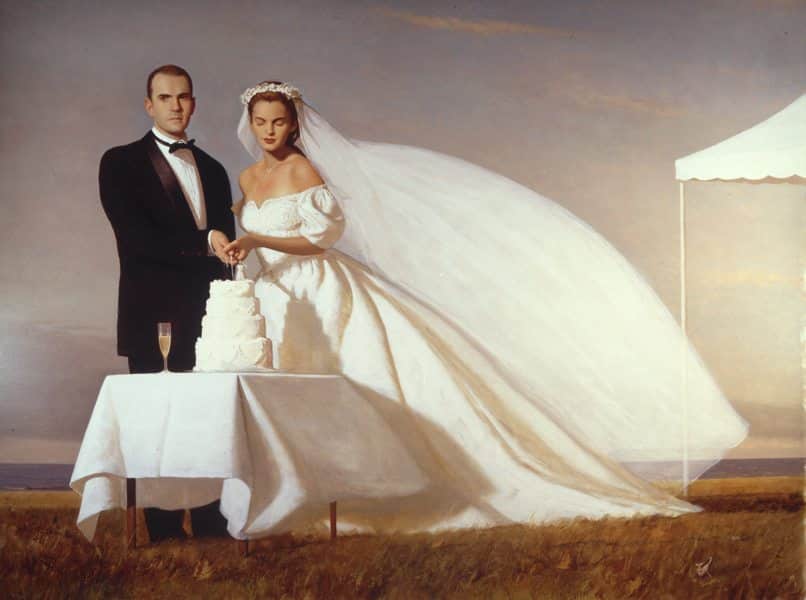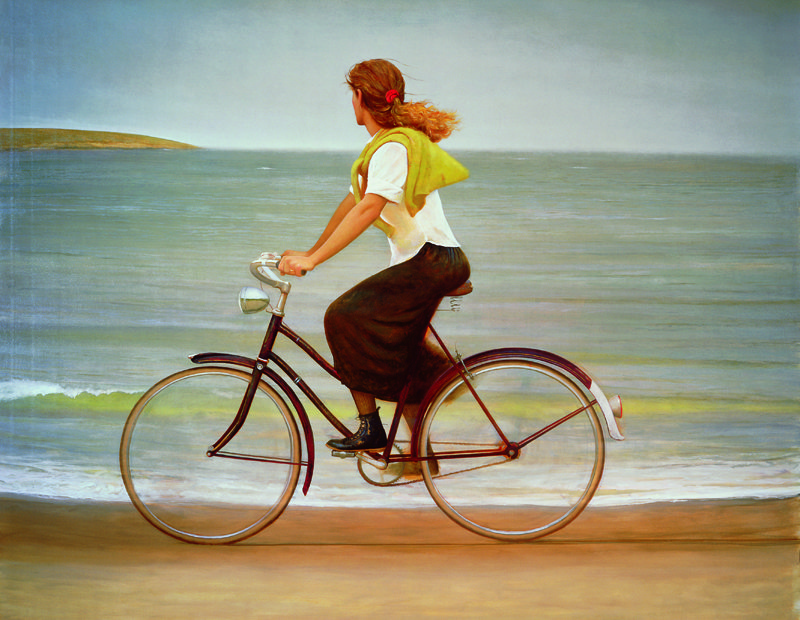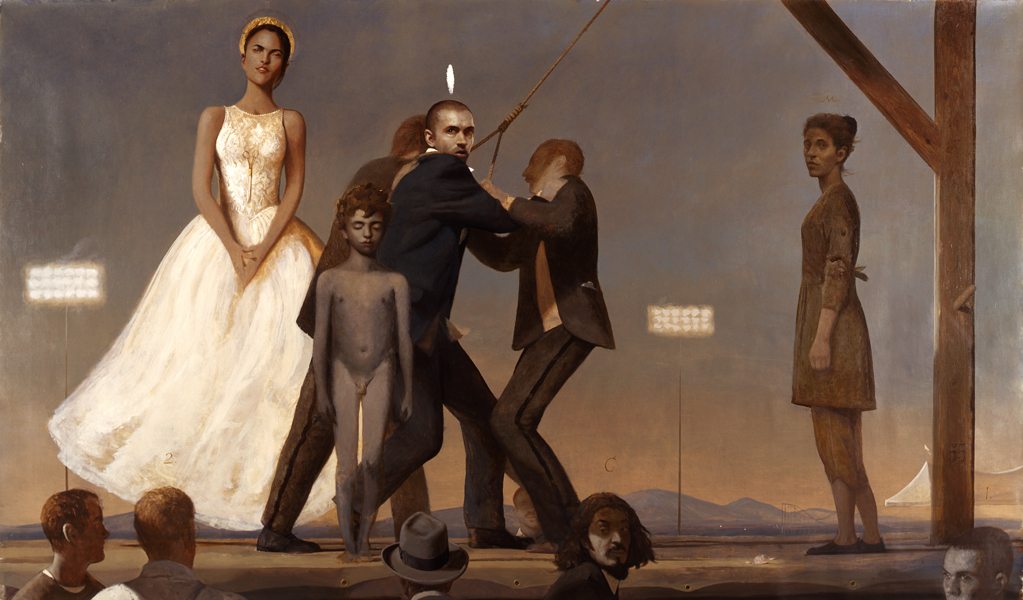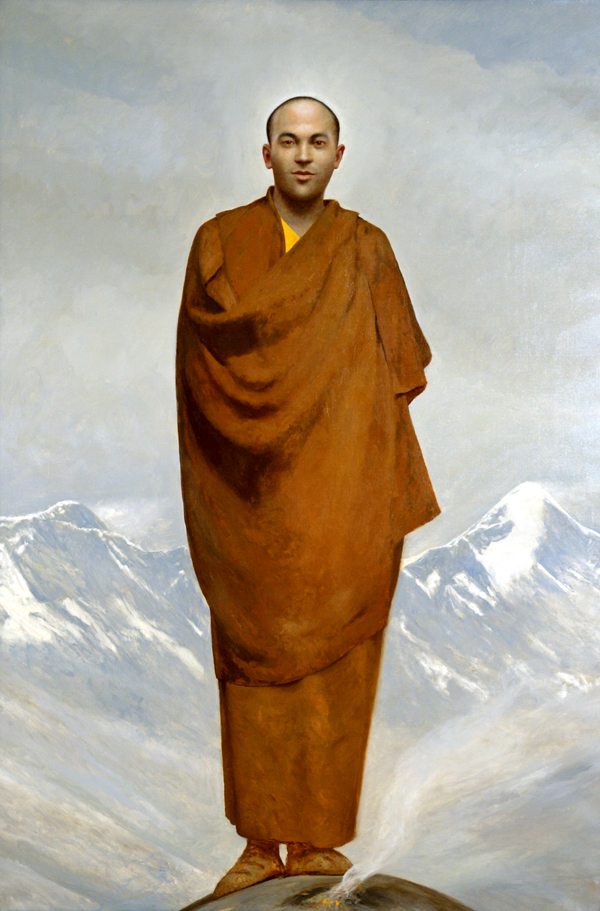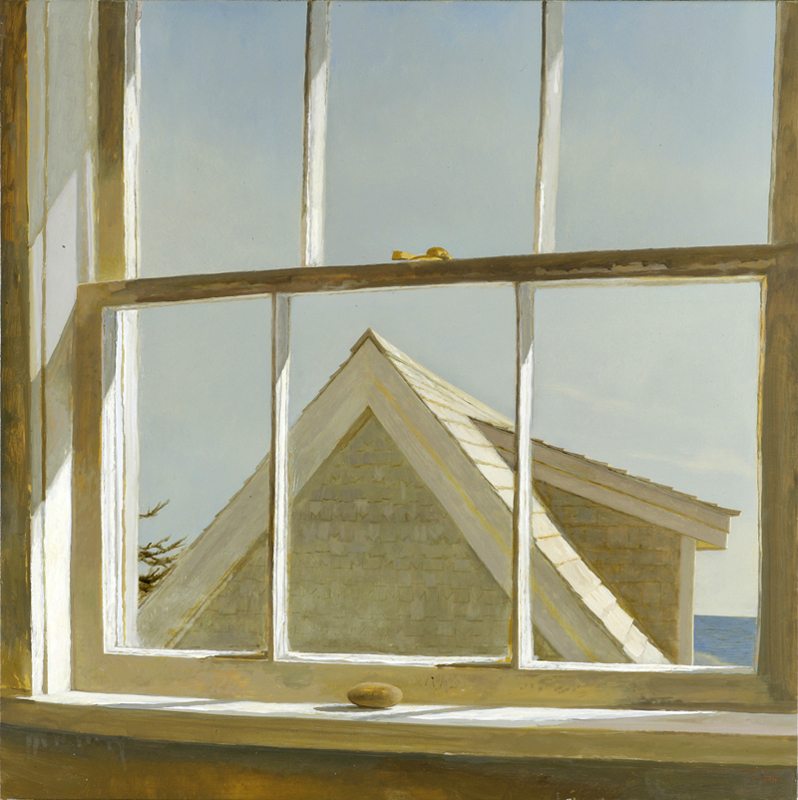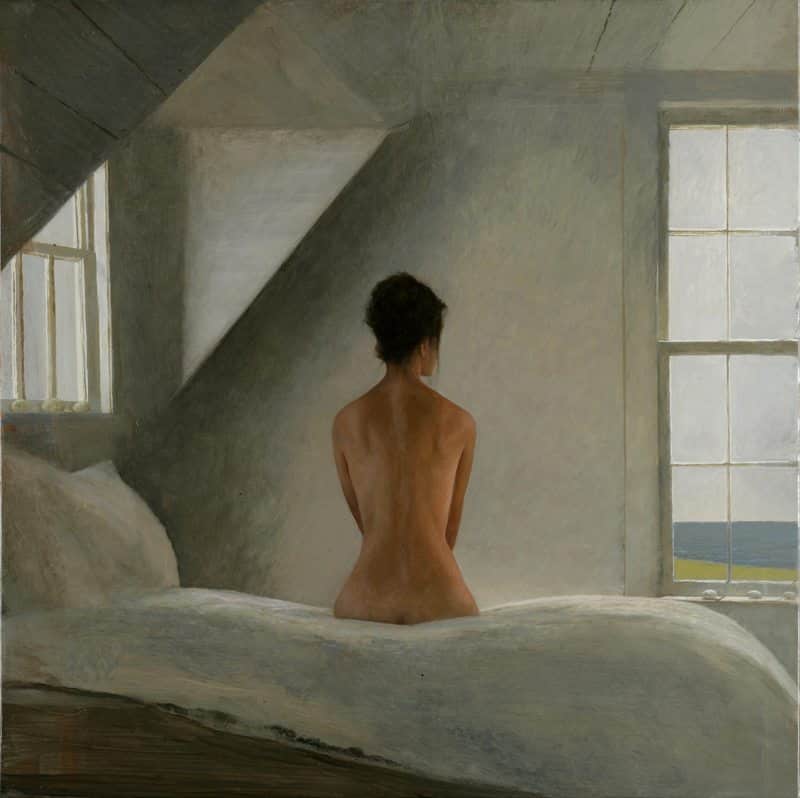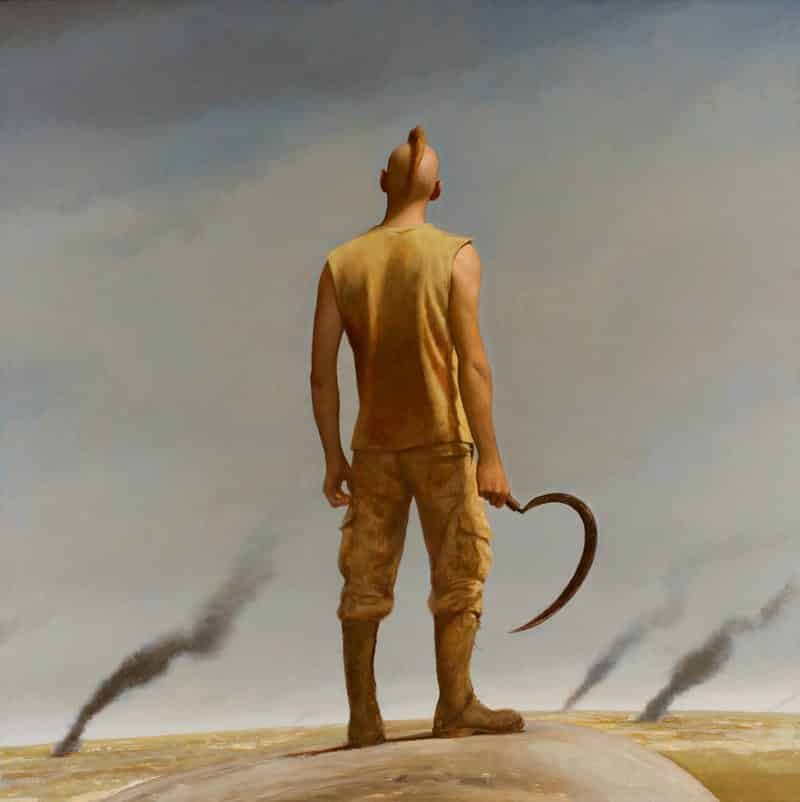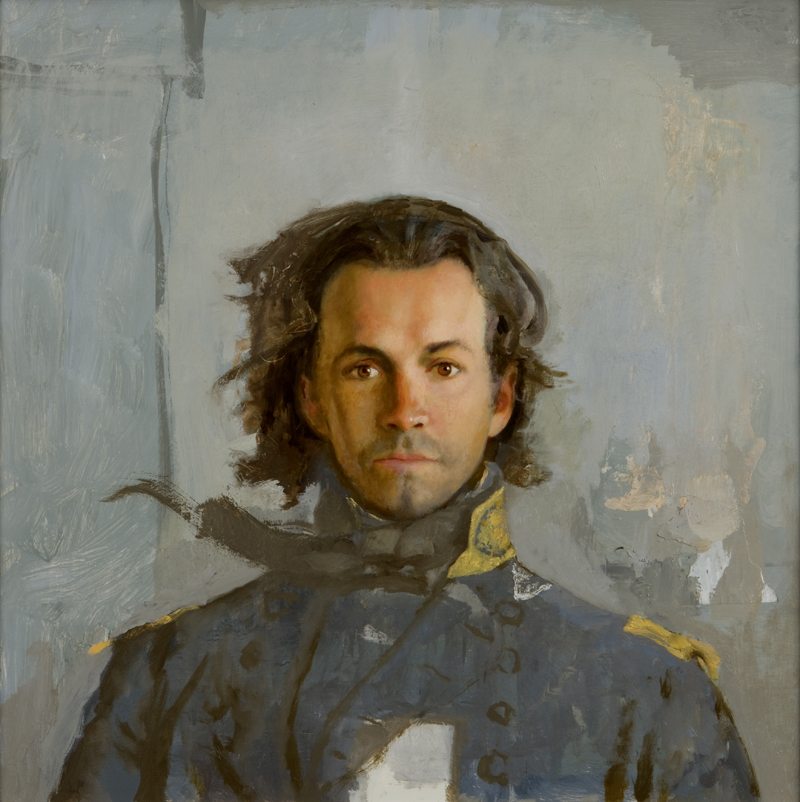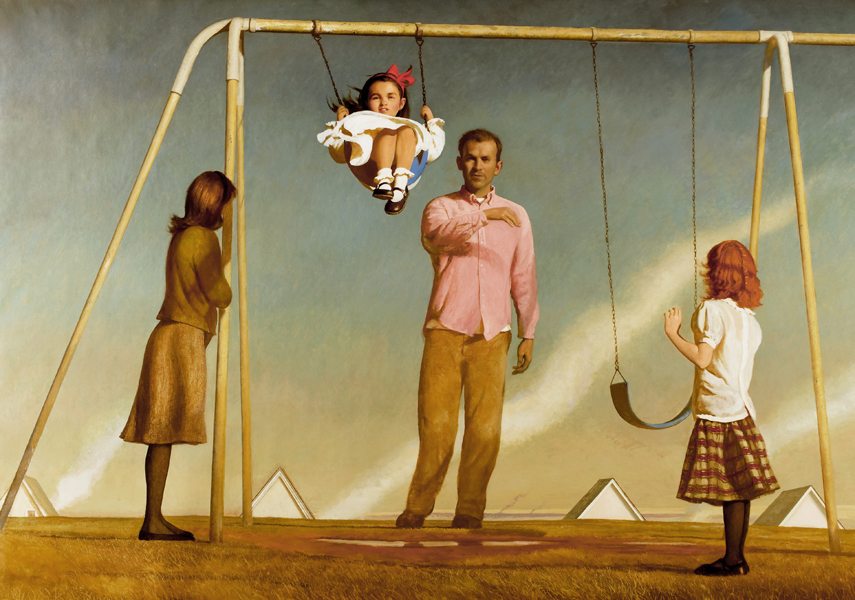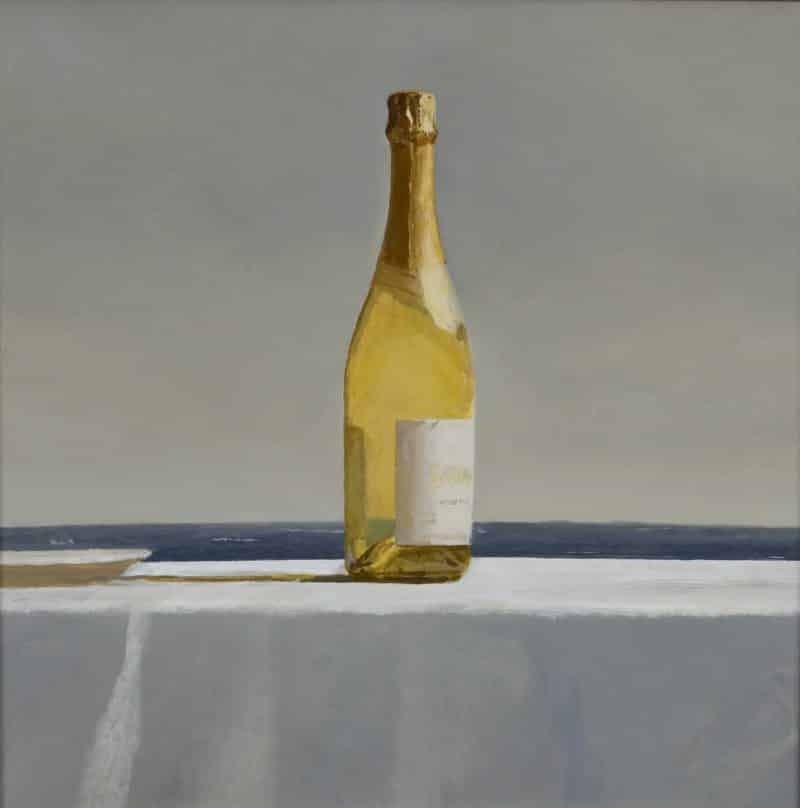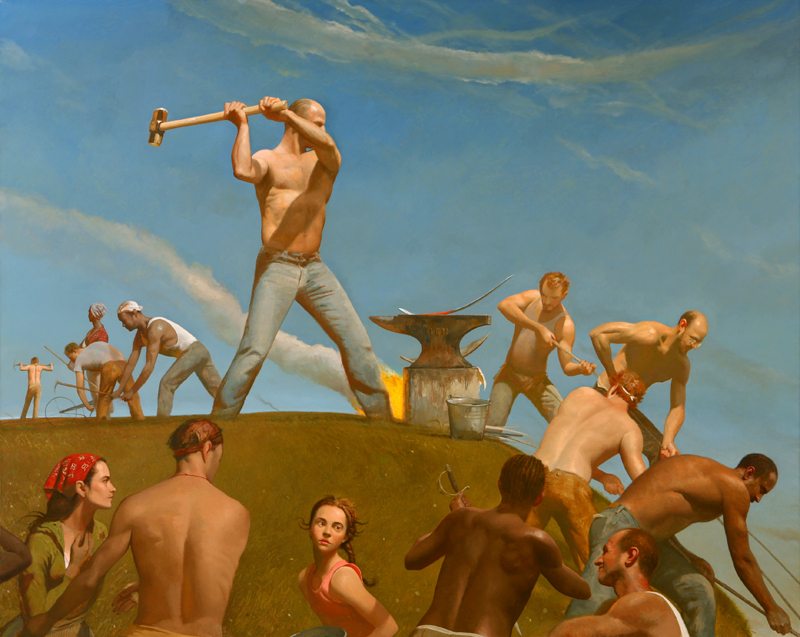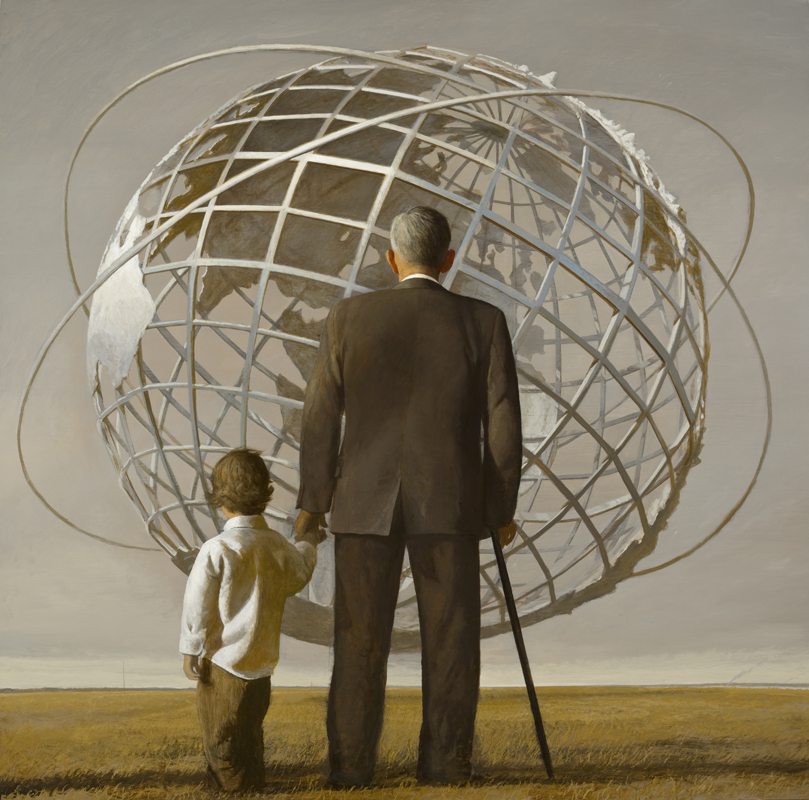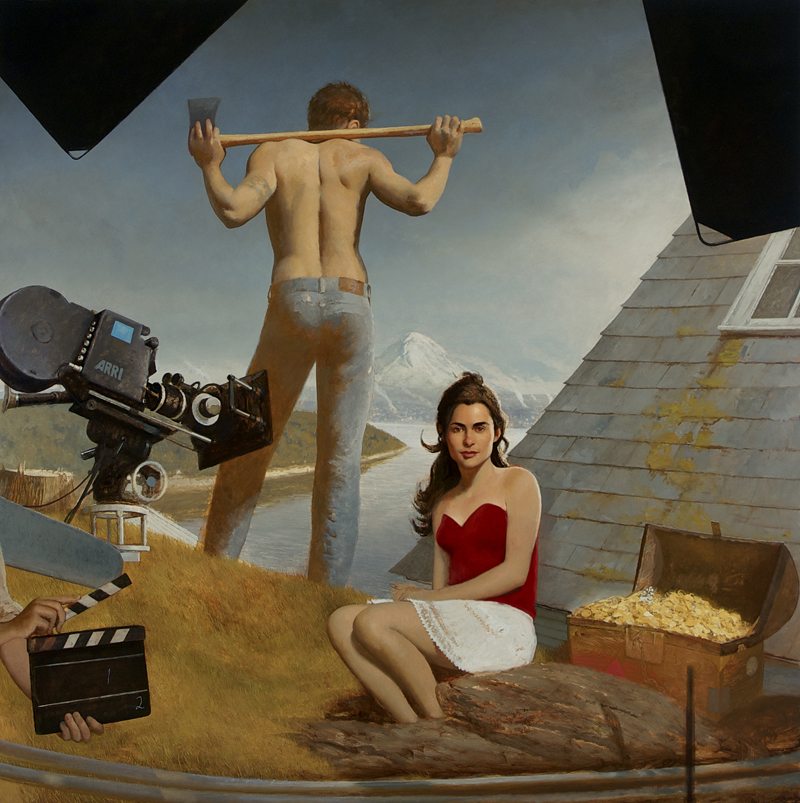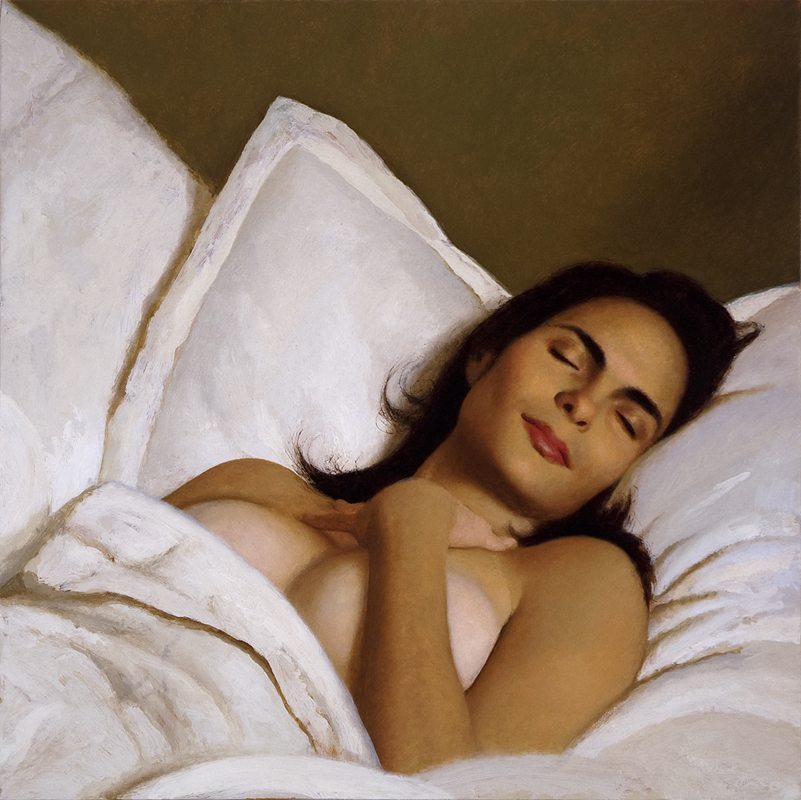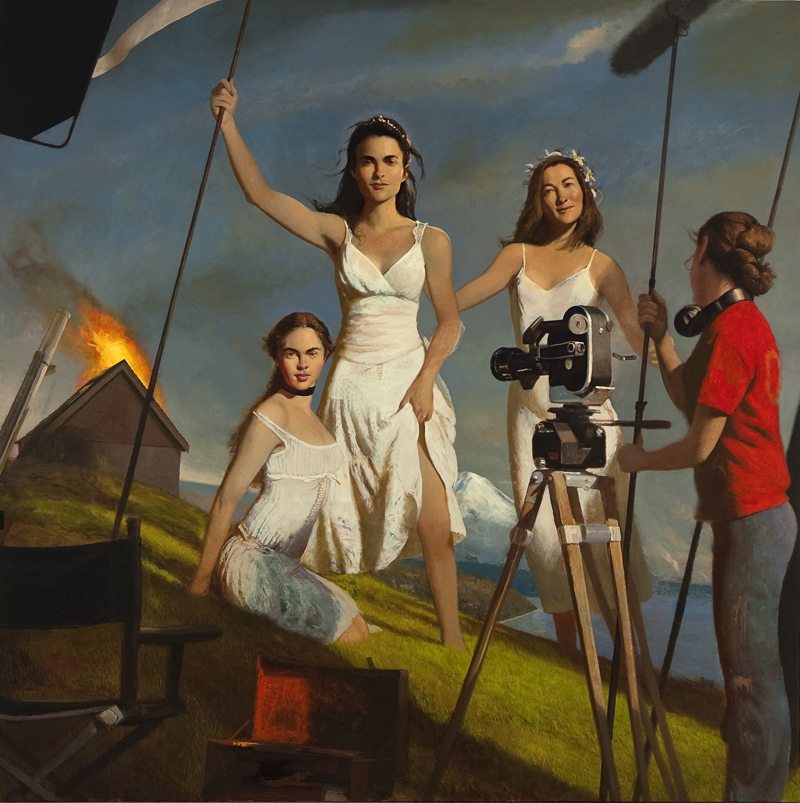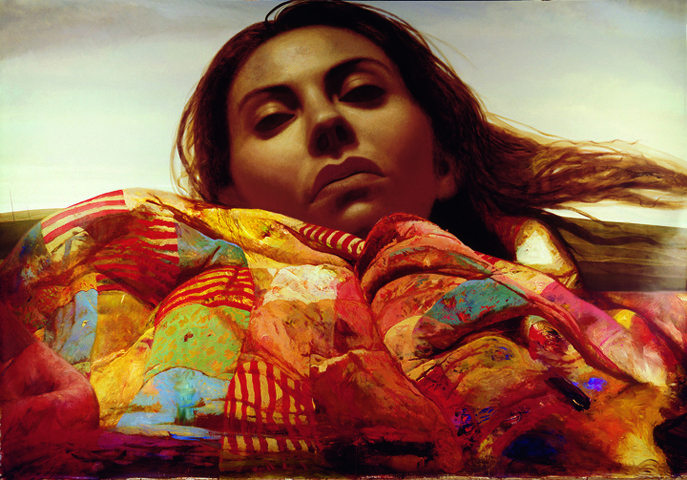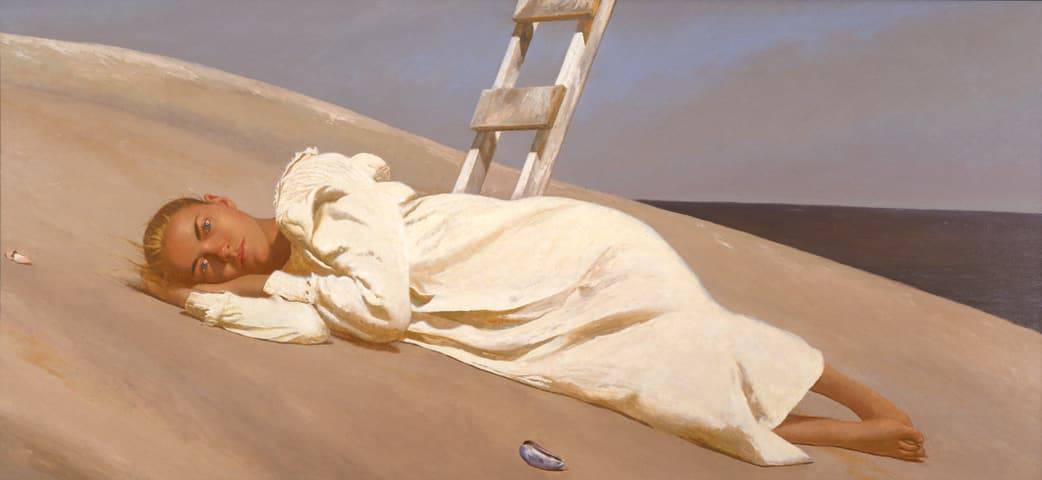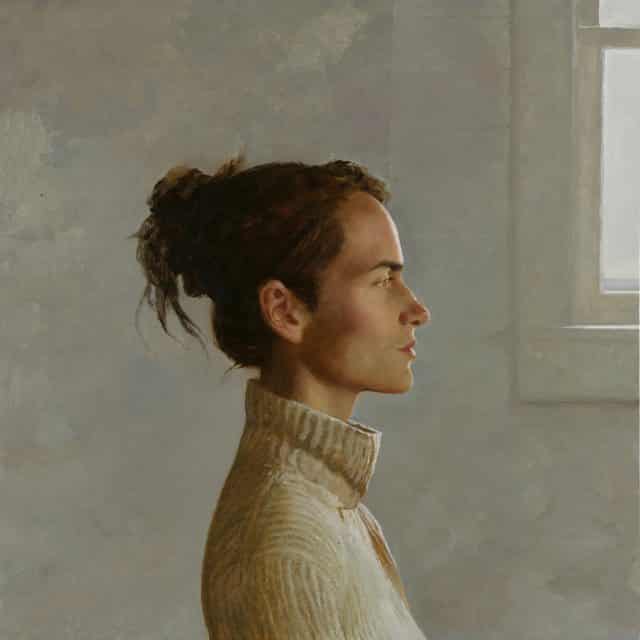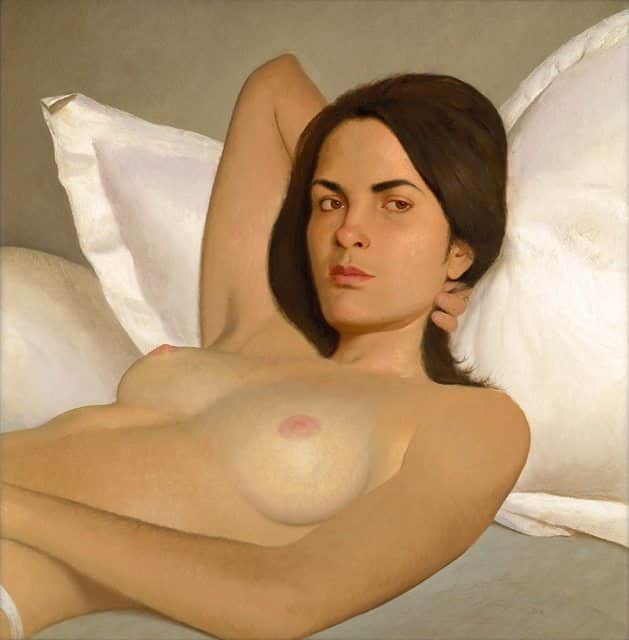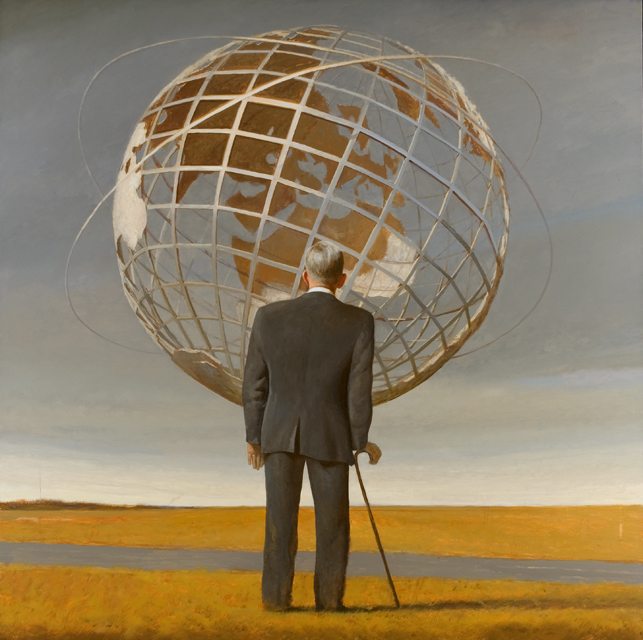The Mysterious Abundance of the Everyday
Bo Bartlett, to a degree rare among contemporary painters, appreciates pre-modern academic history painting and its intent to narrate virtuous human action and display heroic character in the Grand Manner. (The monumental scale of many of his paintings, lost here in reproduction, is a facet of this legacy.) His figurative style is not, however, in the classic or ideal modes proper to the Grand Manner, but instead is situated within the rich lineage of Realism: first named as such in the mid-nineteenth century with regard to artists like Courbet; finding antecedents in seventeenth century painters from Spain like Velazquez and Ribera (“Ribera” being the middle name of one of Bartlett’s sons) as well as from Holland like Hals and Vermeer; and continuing forward into a robust American heritage that includes Thomas Eakins, Winslow Homer, the Ashcan School, Edward Hopper, and the late Andrew Wyeth, Bartlett’s great friend and mentor. The range of styles under the banner of Realism are a thoroughly this-worldly mode of picturing (Courbet purportedly said “show me an angel and I shall paint you one”), concerned with everyday life in its particularity and intimacy.
Bartlett’s contemporary iteration of Realism evokes immediate recognition and plausibility, not unrelated to our experience of a photo (where the various Realist idioms have had an ongoing and complex relationship with photography as representational medium). And, too, as we feel into his works, there is unexpected and complementary sense of strangeness, as it is not straightforwardly clear what is going on or how a given person is being characterized.
Visible familiarity and everydayness; integrated with strange and mysterious elusiveness: elements of an uncanny and wondrous art.
At times we seem to be encountering a dream-like world, echoing earlier twentieth century Surrealist explorations of secret and unconscious meanings; yet these pictorial worlds resonate with thoroughly public references to common culture, both high and low — from ancient mythology, Whitman, and Melville to Norman Rockwell, TV shows, and popular movies (the artist having trained as a film-maker).
The works as such open to multiple interpretations – and due not to any lack. For here lies part of the brilliance and singularity of Bartlett’s art. These paintings, each in its own beautiful and sensuous manner, exude a subtle feeling-tone that pervades the depicted scene — what the philosopher Heidegger called a “fundamental mood” that is prior to the expression of this or that emotion, and where this embodied feeling-tone orients interpretations and actions within and about the given world. These paintings reverberate with “moods” of a novel kind, evoking a mysterious potency of meaning that, however paradoxical, eludes easy definitions and invites multiple readings.
There is a largeness of vision in these works, a heroism of the familiar, the Grand Manner recast into the everyday (as the artist often includes the likeness of friends and family members), the particular and the immediate invoking the universal mystery of it all — manifest only in the comings and goings of this very life.
Michael Schwartz
Dec 2009 / Jan 2010
From the Artist:
“From the smallest particle to the largest galaxy the mystery is great and I am awed by it. I have no need to name it, to quantify it, to sum it up. If I attempt to address it in my work sometimes, it is not from a dogmatic point of reference, I am not searching for a theology or a science to explain the great mystery. An Artist romps around in the mystery like a child plays alone in his own backyard, imagining and making up his own rules and reality. An Artist romps around in the mystery like an animal roams the woods, curious and wide-eyed and alert. An Artist romps around in the mystery like an explorer traversing an unknown land, excited, careful and fully alive.”
About Bo Bartlett
Bo Bartlett is an American realist with a modernist vision. His paintings are well within the tradition of American realism as defined by artists such as Thomas Eakins and Andrew Wyeth. Like these artists, Bartlett looks at America’s heart—its land and its people—and describes the beauty he finds in everyday life. His paintings celebrate the underlying epic nature of the commonplace and the personal significance of the extraordinary. And like Wyeth, Bartlett sees the importance of the smallest details in the overall picture and imbues his work with surreal ambiguity.

